 “I’ve been reminding people that it’s Day 1 for a couple of decades. I work in an Amazon building named Day 1, and when I moved buildings, I took the name with me. [So] what does Day 2 look like?”
“I’ve been reminding people that it’s Day 1 for a couple of decades. I work in an Amazon building named Day 1, and when I moved buildings, I took the name with me. [So] what does Day 2 look like?”
“Day 2 is stasis. Followed by irrelevance. Followed by excruciating, painful decline. Followed by death. And that is why it is always Day 1 [at Amazon].”
So says Jeff Bezos, Founder of Amazon, soon to be a trillion dollar company, in his annual letter to Amazon’s stakeholders.
What are the lessons Government can learn from Bezos and Amazon? But also, how is Government different from Amazon and other entrepreneurial private businesses?
Government is NOT at Day 2
The City of Seattle is at Day 53,830 (incorporated December 2, 1869) and the United States is at Day 87,948. Governments have been around for dozens, hundreds of years. They rarely go into “excruciating, painful, decline” and very very rarely die. Are governments irrelevant? Try getting a driver’s license or not paying your taxes.
But this longevity also leads to complacency, poor or indifferent customer service, and skepticism or outright hate by some citizens. And governments are in competition – for industry, business, skilled and educated citizens, revenue and tax dollars. Poorly operated governments drive away business and smart citizens, and they decline, even if they don’t die.
 Process as Servant, not King
Process as Servant, not King
Every private company and every government has bureaucracy, process, and procedures to do its business. But in private enterprise or government, process is should not be the goal: satisfied customers are the goal.
Jeff Bezos wants a customer-obsessed culture where Amazon employees “experiment patiently, accept failures, plant seeds, protect saplings, and double down when you see customer delight”.
Almost always governments – and most large corporations – focus on the process of customer service, not the customer. We make following procedures and abiding by policy take center stage, no matter what happens to our customers. The ugly episode where United Airlines recently had police drag a customer off a plane is a one example. But government – and the Veteran’s Administration is a another example – makes process King.
This isn’t because individual employees aren’t committed to the mission – the VA is filled with thousands of dedicated employees (second only to the postal service in total numbers), working hard to take care of veterans. But it also has bureaucrats for whom process is King, and too often they are in charge.
This lesson of keeping the focus on customers comes in tiny increments. I recently stayed at a Hilton Hotel which had a happy hour with free beer. I arrived 15 minutes after the end of happy hour. The bartender asked “were you here for happy hour”? I honestly replied “no”. She gave me a complimentary beer anyway. In doing so, she made me a delighted customer.
In a more substantial example, I needed assistance on a social security and Medicare application. I went to a local social security office and had to “take a number and wait in line” for more than 30 minutes. But when I saw a counselor, she did not hurry me, asked me good questions, and gave me wise advice on choices with advantages and disadvantages of each. Then she executed on my choice – she made it happen. I walked away delighted by customer service, despite the wait.
We need to empower government employees to do the right thing, just like Amazon, Nordstrom and similar businesses do.
Embrace external trends
Technology for customer service innovates quickly. Traditionally government has moved slowly and has been risk adverse. This must change.
Computers have automated tasks which could be described with clear rules, if-then statements, and algorithms. Think of an algorithm as a recipe where the inputs and outputs (ingredients) are described along with the steps (procedure) necessary to make the entree.
Private companies now embrace machine learning and artificial intelligence (AI) to power chatbots, text messaging, frequently-asked-questions and help desks. IBM is harnessing its artificial intelligence engine Watson to revolutionize law firms, healthcare and help desks. The City of New York is trying to use Watson to fix its aging 311 system.
Bezos points out several projects in which Amazon uses AI, including Amazon’s Prime Air delivery drones, its new futuristic grocery stores, and its virtual home assistant, Alexa.
 Virtual digital assistants are proliferating in homes and businesses. Burger King intentionally created “TV commercials that cause Google’s voice-activated, artificial intelligence-driven Google Home speaker to start talking about the Whopper sandwich” (USA Today). Amazon’s Alexa, invoked by its Echo devices in millions of homes, now will start appearing in many other devices including automobiles.
Virtual digital assistants are proliferating in homes and businesses. Burger King intentionally created “TV commercials that cause Google’s voice-activated, artificial intelligence-driven Google Home speaker to start talking about the Whopper sandwich” (USA Today). Amazon’s Alexa, invoked by its Echo devices in millions of homes, now will start appearing in many other devices including automobiles.
But few governments embrace these leading-edge technologies, preferring to force our customers to “telephone between 8:00 AM and 5:00 PM” including the “our menu options have changed” phone tree, or to physically, actually show up at a government office to do business.
Public safety officers – law enforcement and firefighters – heavily use two-way radio, but are forced to sit at a keyboard to type reports or make routine queries like checking license plate numbers or verifying identities. These are all tasks which could be automated with natural language processing and speech-to-text capabilities available in Alexa and similar products.
Governments need to adopt these high-value customer service technologies rapidly.
High-Velocity Decision Making
Most governments and large companies make high-quality decisions, but they make high-quality decisions slowly. In the case of governments, the decisions can be excruciatingly slow. For some reason government employees love to play “gotcha”, trying to find every risk and every potential problem with a new idea, even if the chances of the issue materializing are one in a million.
When I was the Chief Technology Officer at the City of Seattle, I would gladly take one enthusiastic, “can do”, positive, product manager looking at the “new idea” glass as half full instead of a dozen devil’s advocate employees who always want to see the glass half empty, or an engineer who would say “the glass doesn’t meet our specifications”.
Speed matters. Many decisions are trivial and inconsequential. They can be easily reversed. Make them fast. But the very worst outcome is to banish a decision to a committee or kick it upstairs for a more senior manager to make.
Governments are Not Businesses
However there are differences between governments and private businesses.
Governments cannot choose their customers – we need to accept all comers. This includes those with special needs, low income, the senile, the mentally disturbed, the homeless and the technologically challenged. This often means we will have a “real person” help desk as well as a chatbot.
Governments are in the eye of public scrutiny. Amazon can hide most of its bad decisions (the very public failure of the Fire Phone is an obvious exception). Government cannot. Mistakes such as a $43 million budget overrun for the City of Seattle’s utility billing system make headlines and are featured on the 11:00 PM news.
Does this mean government should avoid big projects? Not at all: Governments must embrace modern cloud-based technologies, professional project management and agile development of software systems, delivering incremental value every 6 to 8 weeks.
 Governments don’t fail, private businesses do. The United State Government has been around since 1776. The City of Seattle has been operating since 1869. Governments don’t face the same competitive pressure as private businesses. Nevertheless, governments do compete for economic development, industry and citizens to locate within their boundaries. Successful governments boom, unsuccessful ones languish.
Governments don’t fail, private businesses do. The United State Government has been around since 1776. The City of Seattle has been operating since 1869. Governments don’t face the same competitive pressure as private businesses. Nevertheless, governments do compete for economic development, industry and citizens to locate within their boundaries. Successful governments boom, unsuccessful ones languish.
Governments are operated by elected officials, not CEOs. Mayors, City Council members, County Executives, Governors, legislatures and other elected officials run our various governments. But almost all governments have three branches – executive, legislative and judicial. These branches check and balance each other, slowing decision making. Elected officials also … well … need to run for re-election. That increases their aversion to taking risks. Amazon and many private businesses, run by a CEO and a relatively uninvolved Board of Directors, can be nimbler.
It is always Day 1 at Amazon. If Day 2 is stasis and irrelevance, government should try to be at day 1.5.

 Are we creating a new Gestapo or East German Stasi, where we encourage citizens to report on their family, friends and neighbors? All in the name of keeping us safe?
Are we creating a new Gestapo or East German Stasi, where we encourage citizens to report on their family, friends and neighbors? All in the name of keeping us safe?



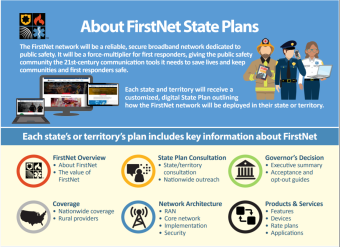
 The Governor doesn’t have to commit any funds or make any commitments. No public safety agencies in a state have to use FirstNet – they are free to choose other networks. But if those agencies want priority above all other users, if they want a dedicated help desk, a customized app store, end-to-end security and all the other benefits, they can sign up with AT&T and get it.
The Governor doesn’t have to commit any funds or make any commitments. No public safety agencies in a state have to use FirstNet – they are free to choose other networks. But if those agencies want priority above all other users, if they want a dedicated help desk, a customized app store, end-to-end security and all the other benefits, they can sign up with AT&T and get it.
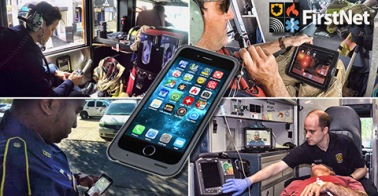
 “I’ve been reminding people that it’s Day 1 for a couple of decades. I work in an Amazon building named Day 1, and when I moved buildings, I took the name with me. [So] what does Day 2 look like?”
“I’ve been reminding people that it’s Day 1 for a couple of decades. I work in an Amazon building named Day 1, and when I moved buildings, I took the name with me. [So] what does Day 2 look like?” Process as Servant, not King
Process as Servant, not King Virtual digital assistants are proliferating in homes and businesses. Burger King intentionally created “TV commercials that cause Google’s voice-activated, artificial intelligence-driven Google Home speaker to start talking about the Whopper sandwich” (
Virtual digital assistants are proliferating in homes and businesses. Burger King intentionally created “TV commercials that cause Google’s voice-activated, artificial intelligence-driven Google Home speaker to start talking about the Whopper sandwich” ( Governments don’t fail, private businesses do. The United State Government has been around since 1776. The City of Seattle has been operating since 1869. Governments don’t face the same competitive pressure as private businesses. Nevertheless, governments do compete for economic development, industry and citizens to locate within their boundaries. Successful governments boom, unsuccessful ones languish.
Governments don’t fail, private businesses do. The United State Government has been around since 1776. The City of Seattle has been operating since 1869. Governments don’t face the same competitive pressure as private businesses. Nevertheless, governments do compete for economic development, industry and citizens to locate within their boundaries. Successful governments boom, unsuccessful ones languish. Those of us who can remember the 20th Century fondly recall artifacts and phrases from our “youth”. And time marches inexorably on. The cool, whiz-bang, stuff of 2017 is the nostalgia of 2040.
Those of us who can remember the 20th Century fondly recall artifacts and phrases from our “youth”. And time marches inexorably on. The cool, whiz-bang, stuff of 2017 is the nostalgia of 2040.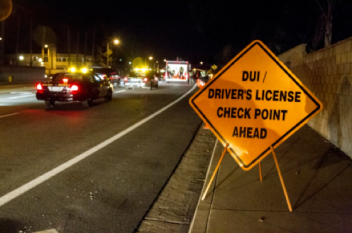 When the 2040s roll around, presuming civilization still exists, what out-of-date artifacts and phrases will we remember from 2017ish? Here are a few of my ideas:
When the 2040s roll around, presuming civilization still exists, what out-of-date artifacts and phrases will we remember from 2017ish? Here are a few of my ideas: On the other hand, I’m fairly certain some facets of life are unlikely to change significantly over the next 25 years:
On the other hand, I’m fairly certain some facets of life are unlikely to change significantly over the next 25 years: 2017 is not the year for Big Change in city, county or state tech. I’d argue NO year is a year for “Big Change” in the technologies used by government. Government does not change fast, which may be a Good Thing.
2017 is not the year for Big Change in city, county or state tech. I’d argue NO year is a year for “Big Change” in the technologies used by government. Government does not change fast, which may be a Good Thing.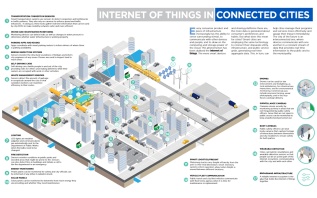
 nhumaned aerial vehicles – UAVs or Drones. Drones seem to have suddenly exploded on the scene a couple of years ago when the technology was ripe, although radio-controlled aircraft have been around for decades. Now, however, governments have discovered the tremendous usefulness of these aircraft, far beyond the military applications. North Carolina’s
nhumaned aerial vehicles – UAVs or Drones. Drones seem to have suddenly exploded on the scene a couple of years ago when the technology was ripe, although radio-controlled aircraft have been around for decades. Now, however, governments have discovered the tremendous usefulness of these aircraft, far beyond the military applications. North Carolina’s 
 Technology companies and executives have tried to stay apart from politics. Taking sides on political questions is usually the recipe for customer disaffection and even a boycott. #
Technology companies and executives have tried to stay apart from politics. Taking sides on political questions is usually the recipe for customer disaffection and even a boycott. # CES, formerly the
CES, formerly the 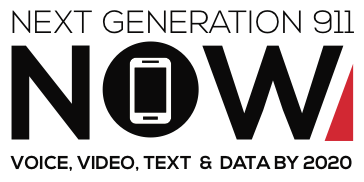 Alexa will soon be able to control video cameras and audio devices throughout the house. Should “Alexa call 911” automatically activate all such devices? Should it connect them to digital recorders or maybe automatically connect them all to the 911 center so the operator can hear and see what is going on? (Of course 911 centers can’t receive video right now, but with
Alexa will soon be able to control video cameras and audio devices throughout the house. Should “Alexa call 911” automatically activate all such devices? Should it connect them to digital recorders or maybe automatically connect them all to the 911 center so the operator can hear and see what is going on? (Of course 911 centers can’t receive video right now, but with 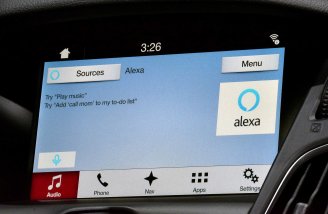 There will also be
There will also be  The most immediate effect will be on
The most immediate effect will be on 
